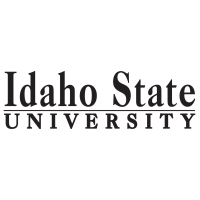In August 2010 we collected one 24-hr drift sample from 12 streams (4 of each disturbance class). From June to August 2011, we collected drift samples monthly for 15 streams (5 of each disturbance class). In 2012, we collected samples of stream export from unburned and prescribed fire streams in early September. To measure downstream export of invertebrates, we placed 250 µm mesh drift nets in the thalweg and immediately upstream of its confluence with the main-stem river. For most sample periods, nets were deployed for approximately 24-h during base flow (late July and August). High discharge associated with spring snowmelt, however, precluded continuous 24-hr sampling in June, and early July. Therefore, during those months, we sampled 3 times per day (dawn, midday, and dusk). Duration of net deployment ranged from 1 to 180 min. We measured discharge through the nets with a flow meter (+/- 0.01 m/s) (Marsh-McBirney, The Hach Company, Loveland, CO, USA) at the beginning and end of each sample period and at any time the nets were examined for signs of clogging.
We calculated the volume of water that traveled through the net during sample periods using averages of water velocities at the beginning and end of each sample period. All invertebrates were removed from drift samples under a dissection microscope (≥7× magnification). Once invertebrates were separated from other organic matter in the export samples, invertebrates >1 mm were separated from smaller invertebrates with nested sieves (1-mm and 250 µm). We identified all invertebrates > 1mm to the lowest taxonomic level, typically genus, and measured them to the nearest 1.0 mm (± 0.5 mm). Diptera of the family Chironomonidae were identified as either Tanypodinae or non-Tanypodinae. We also calculated total exported biomass >1 mm using published length mass regression equations (Benke et al. 1999). For sampling periods when drift samples were taken 3 times per day, concentrations of invertebrate biomass were averaged across all three sample periods to use in analysis.
Data and Resources
| Field | Value |
|---|---|
| Modified | 2019-06-10 |
| Release Date | 2019-06-10 |
| Publisher | |
| Identifier | 133a65c4-efc7-4188-a5a0-8de8bcb3aca4 |
| NKN Identifier | 5AE6807E-91FA-4D33-A6B3-508675794EEB |
| Spatial / Geographical Coverage Location | South Fork Salmon River, Idaho, USA |
| Language | English (United States) |
| License | |
| Author | |
| Contact Name | Hannah Harris |
| Contact Email | |
| Public Access Level | Public |


![[Open Data]](https://assets.okfn.org/images/ok_buttons/od_80x15_blue.png)